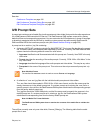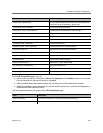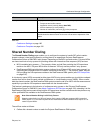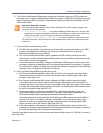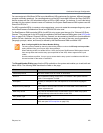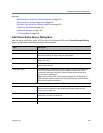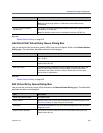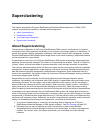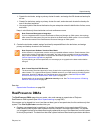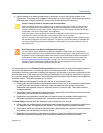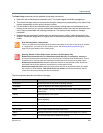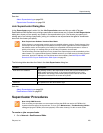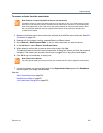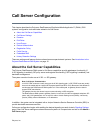
Polycom, Inc. 226
Superclustering
This chapter describes the Polycom
®
RealPresence
®
Distributed Media Application™ (DMA
®
) 7000
system’s superclustering capability. It includes the following topics:
● About Superclustering
● RealPresence DMAs
● Join Supercluster Dialog Box
● Supercluster Procedures
About Superclustering
The two-server configuration of the Polycom RealPresence DMA system is configured as a co-located
two-server cluster, which enhances the reliability of the system by providing a measure of redundancy. To
provide even greater reliability, geographic redundancy, and better network traffic management, multiple
Polycom RealPresence DMA systems (either single-server or two-server systems) in distributed locations
can be combined into a supercluster.
A supercluster is a set of up to five Polycom RealPresence DMA system clusters that are geographically
dispersed, but still centrally managed. The clusters in a supercluster are all peers. There is no “master” or
“primary” cluster. All have local copies of the same data store, which are kept consistent via replication.
This common data store enables all the Call Servers to share the same site topology, dial plan, bandwidth
management, endpoint registrations, usage reporting, and status monitoring. Sharing and replicating this
data also allows single-point management (configuration/re-configuration) of the shared data from any
cluster of the supercluster. Up to three clusters can function as Conference Managers, hosting conference
rooms and managing pools of MCUs.
Responsibility for most functionality, including Active Directory and Exchange integration, device
registration, call handling, and conference room (VMR) hosting, is apportioned among the clusters using
site topology territories. You can assign a set of responsibilities to each territory, and you can assign a
primary cluster and a backup cluster for each territory. When the primary cluster is online, it controls the
territory and carries out all of the responsibilities belonging to the territory. When the primary cluster is
offline, the backup cluster assumes control of the territory and carries out all of the territory’s responsibilities.
A standalone (not superclustered) Polycom RealPresence DMA system has a single default territory for
which it’s the primary cluster (and of course there is no backup). When you join other clusters to it to create
a supercluster, it still has that same single default territory, it’s still the primary cluster for the default territory,
and there is still no backup cluster. Essentially, one cluster is responsible for everything, and the others do
nothing. So immediately after forming a new supercluster, you should do the following:
1 If you haven’t already done so, create your site topology data or integrate with a Polycom
RealPresence Resource Manager or CMA system to obtain it. See Site Topology on page 278.
2 Determine how you want to organize your sites into territories in order to best distribute
responsibilities and workload among the clusters of your supercluster. A number of strategies are
possible. For instance, with a five-cluster supercluster, you could adopt one of the following
schemes:



